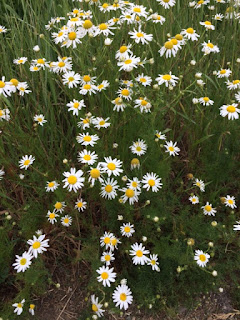This time of the year, flower gardens throughout the area are in full bloom with all kinds of beautiful foliage. Some of those flowers are annuals, some perennials. Some are from seed, others grown from bedding plants, and others gifts from friends or neighbors. Some are natives, some are introduced, and more importantly, some are actually noxious weeds.
A noxious weed is any weed that has been determined by the State of Colorado to negatively impact or threaten our native or agricultural ecosystems. Typically a plant that was introduced from Europe, Asia, or Africa, these weeds have abilities to out-compete our native plants, meaning they spread unchecked throughout our landscape. Unfortunately, many of these plants are still being planted in yards and gardens throughout our area, and are sold by nurseries or seed companies and purchased by unsuspecting homeowners who are looking for spreading, low maintenance plants with attractive flowers. While that’s exactly what they get, homeowners also get themselves and their neighbors into a mess, not to mention that they are breaking the law by planting these noxious weeds.
List A noxious weeds need to be eradicated, by law, whenever they are found on any property in order to protect communities and the state as a whole. There are several plants that I see in landscapes that are List A species.
In our area, Orange hawkweed (Hieracium aurantiacum) is one of the biggest List A offenders. It is believed that this plant was sold and planted by a local Steamboat Springs landscaper for several years in the recent past. The orange flowers are beautiful, but this plant spreads quickly and can invade roadsides, lawns, common areas, and more.
Myrtle spurge (Euphorbia myrsinites) is another common plant in home landscapes that needs to be eradicated. The leafy plant has yellow-green blooms, which are really small flowers surrounded by petal like bracts. I see this plant in a yard near my sister-in-law’s house when I visit her and it gives me heartburn whenever I see it.
Purple Loosestrife (Lythrum salicaria) is a perennial plant that is found in our area, especially in wet areas. While it looks a lot like our native fireweed, this bad actor can create millions of seeds per plant and those seeds remain viable for 2-5 years. If you find this one in your yard, you’d better get rid of it quickly!
List B noxious weeds are weeds that need to be controlled to limit spread. You should control these in a yard situation, too, as they can escape to other areas quickly and cause havoc.
Dame’s Rocket (Hesperis matronalis) is a 4 foot tall plant of purple or lavender colored, 4-petaled flowers. It has been included in many wildflower seed mixes, and tends to escape into pastures, forests, and more.
 |
| Scentless chamomile |
Oxeye Daisy (Chrysanthemum leucanthemum), not to be confused with the larger Shasta Daisy, is another flower that is sometimes included inappropriately in wildflower mixes and is prevalent in our area, both in landscapes and in pastures.
Other List B species to be aware of include Common tansy (Tanacetum vulgare) and Scentless chamomile (Matricaria perforata). Attractive plants on Colorado’s Watch List (plants that are a potential threat to our environment) include Baby’s breath (Gypsophila paniculata), and Yellow flag iris (Iris pseudacorus). Follow this link for a detailed list with photos: https://www.colorado.gov/pacific/agconservation/noxious-weed-species.
Knowing what you’re planting in your yard is the first step in helping to halt the spread of noxious weeds. Always check wildflower seed packets before planting and check with your local Extension office to see if something you’re considering planting is actually a noxious weed, or if you need help identifying suspicious plants. Your neighbors will thank you and you can continue to be a law-abiding citizen.
Todd Hagenbuch is the Agriculture Extension Agent for CSU Routt County Extension.

No comments